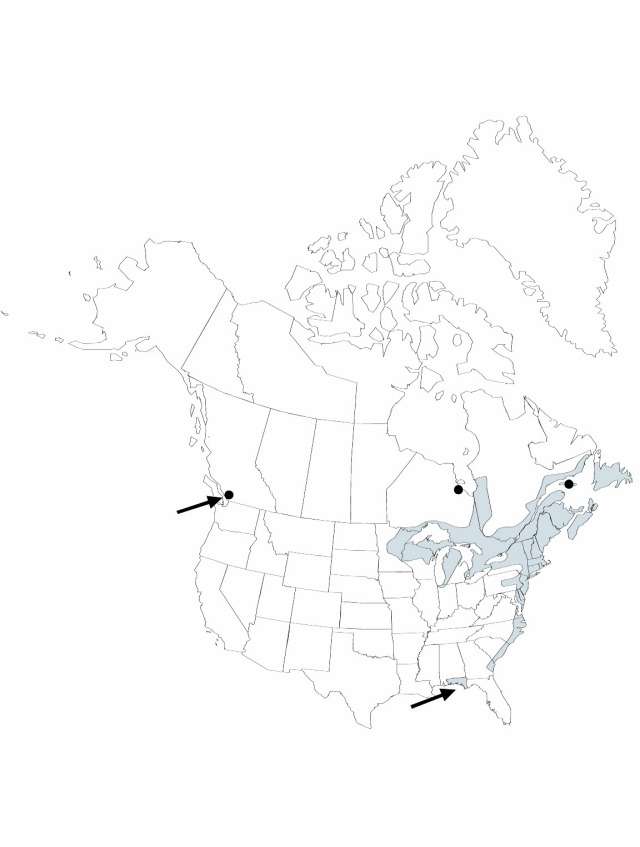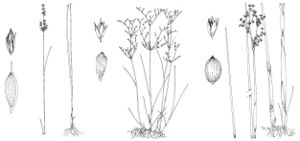Juncus pelocarpus
Syn. Luzul. 30. 1823.
Herbs, perennial, rhizomatous, 0.3–7 dm. Rhizomes 1–3 mm diam., nodes not swollen. Culms erect, terete, 1–2 mm diam., smooth. Cataphylls 0 (rarely 1, straw-colored, apex obtuse). Leaves: basal 0–2, cauline 1–4, small fascicles of short capillary leaves often on rhizomes and stems; auricles 0.3–1 mm, apex rounded, membranaceous; blade terete, 1.5–11 cm × 0.8–1.1 mm. Inflorescences terminal cymes, flowers single or paired at nodes, (rarely in 3s), 2–25 cm, branches spreading to erect; primary bract erect. Flowers: tepals straw-colored, oblong; outer tepals 1.6–2.3 mm, apex obtuse; inner tepals 1.8–2.8 mm, apex obtuse; stamens 6, anthers 2–3 times filament length. Capsules included to exserted, chestnut-brown, 1-locular, narrowly ovoid, 1.5–3.5 mm, apex acute proximal to beak, valves separating at dehiscence, fertile only proximal to middle. Seeds ovoid, 0.3–0.5 mm, not tailed; body clear yellowbrown. 2n = 40.
Phenology: Fruiting late summer–fall.
Habitat: Shores, peat bogs, sandy soils, pools, occasionally submersed in lakes, rarely in salt water
Elevation: 0–600 m
Distribution

B.C., N.B., Nfld. and Labr. (Nfld.), N.S., Ont., P.E.I., Que., Ala., Conn., Del., D.C., Fla., Ga., Ind., Maine, Md., Mass., Mich., Minn., N.H., N.J., N.Y., N.C., Ohio, Pa., R.I., S.C., Vt., Va., Wis.
Discussion
Populations from Virginia and south have been separated as Juncus pelocarpus var. crassicaudex (J. abortivus) based on their taller culms and thicker rhizomes. The evidence used to support the varietal status for the southeastern plants (N. A. Murray and D. M. Johnson 1987) clearly demonstrates that these plants are the southern end of a cline.
The flowers are often replaced by bulbils.
Selected References
None.
Lower Taxa
"-3timesfilamentlength" is not declared as a valid unit of measurement for this property.
